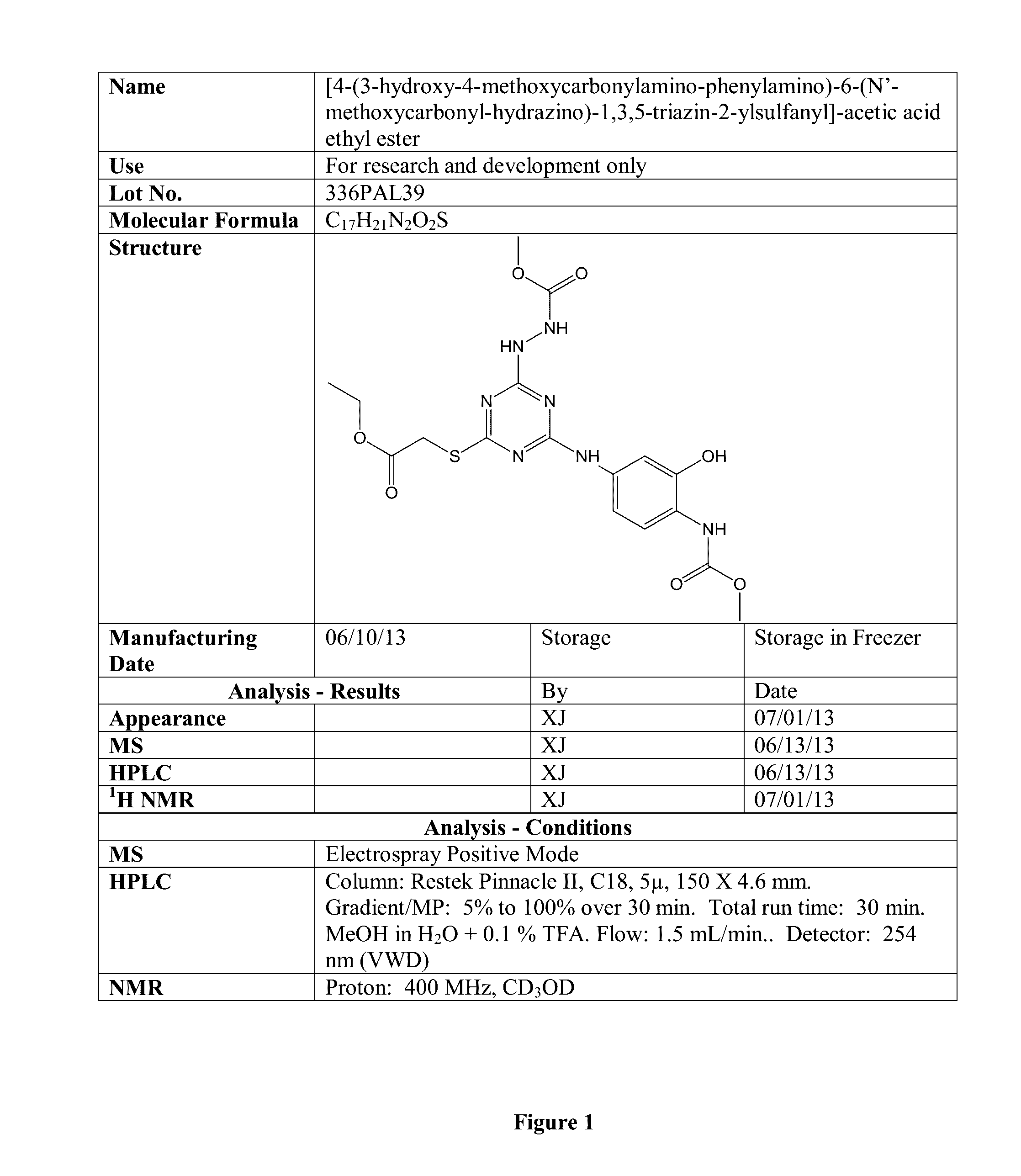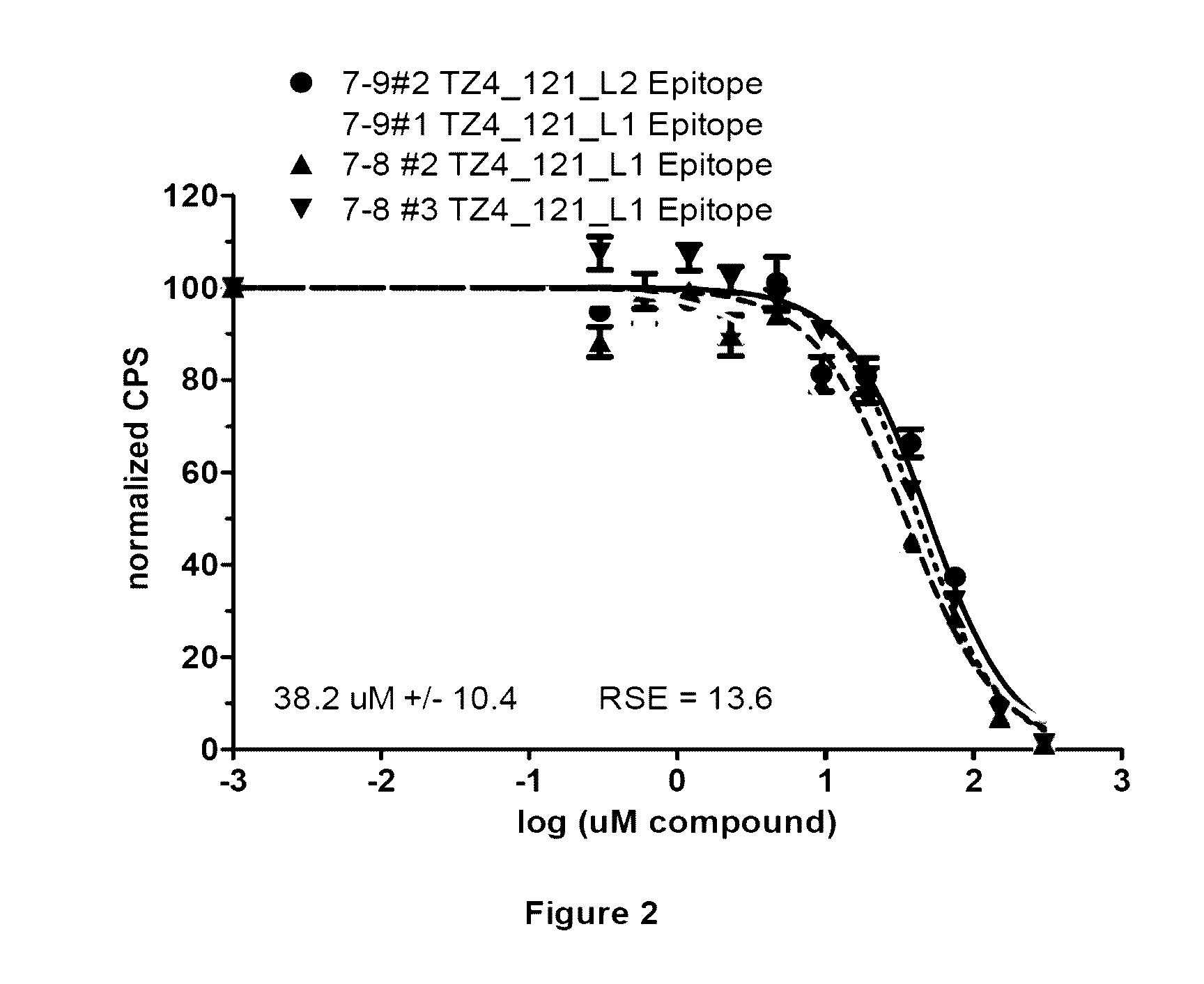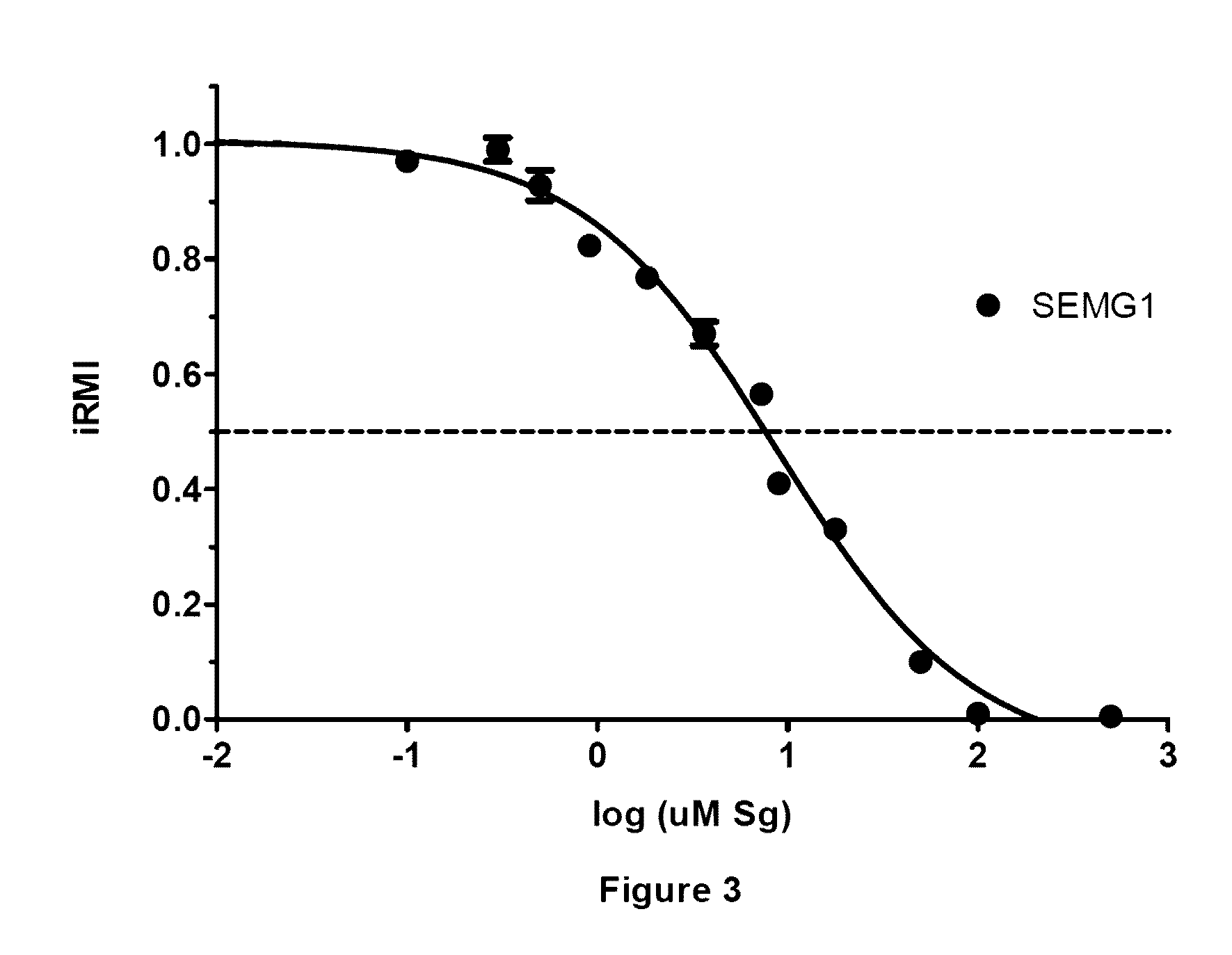Small molecules for inhibiting male fertility
a technology of small molecules and inhibition of male fertility, which is applied in the direction of heterocyclic compound active ingredients, drug compositions, sexual disorders, etc., can solve the problems of limited options for contraception for men, and achieve the effects of inhibiting forward motility, and inhibiting forward motility of spermatozoa
- Summary
- Abstract
- Description
- Claims
- Application Information
AI Technical Summary
Benefits of technology
Problems solved by technology
Method used
Image
Examples
example 1
Synthetic Approaches to Making the Compounds Described Herein
[0236]The structures for compounds TZ4_121, TZ4_125 and TZ4_132, as described herein, are shown below.
Discussion
[0237]All compounds synthesized went through the common intermediate 3. Starting from cyanuric chloride 1, ethyl thioglycolate displaced one of the chlorides to obtain compound 2. Compound 2 was then treated with methyl carbazate to yield compound 3.
[0238]The synthesis of TZ4_121 began with the formation of the methyl carbamate using methyl chloroformate and calcium carbonate. The nitro functionality was then reduced to give compound 6, which was used without further purification. Two equivalents of compound 6 reacted with compound 3 to give TZ4_121.
[0239]The synthesis of TZ4_125 began with carboxylic acid 7. The methyl ester was formed in methanol with catalytic sulfuric acid. The methyl carbamate was then introduced in a 2-step, 1-pot approach but treating the aniline with phosgene followed by methanol and 5 Å ...
example 2
Analysis of Various Properties of Compound TZ4_121
[0264]Compound TZ4_121 was prepared using the synthetic approaches described above, and has the following structure:
[0265]Certain physical characteristics of this compound are provided in the table below, and others are provided in FIG. 1.
LogP2.9LogD(7.4)2.88mass467.456Polar Surface Area211.22van der Waal's SA615.77Acceptors, Donors11.5pI5.54
[0266]The compound was evaluated using a Principal Component Analysis (PCA) of 15 principal physico-chemical descriptors, and compared to two sub-libraries extracted from eDrugs and DrugBank which define orally bioavailable compounds. This evaluation showed that the compound falls within the same space (characteristics) as other known orally active drugs.
[0267]An ADME (adsorption, distribution, metabolism, and excretion) study was performed. It was determined that the compound has the following properties:
[0268]1. Good solubility at 100 μM
[0269]2. Poor permeability to Caco-2 cells; 0.2×10−6 cm / se...
example 3
[0292]The purpose of this example was to determine the minimum sequence on either side of the critical SEMG1 (Gene ID: 6406 as recorded at the NCBI database), residue Cys239 (C11 in peptide), that retains binding to EPPIN and inhibits sperm motility. It was determined that this SEMG1 sequence is E229 to Q247:
(SEQ ID NO: 3)E1HS3SKVQ7TS9LC11PAHQDKLQ19
[0293]As a result of this information, a 3D peptide model was constructed, using the approach discussed in Silva et al., Biology of Reproduction, (2012) 87(3):56, 1-8. Briefly, three-dimensional homology models for the EPPIN C-terminal region (K73-P133) were built using the SWISS-MODEL Workspace [Arnold et al., Bioinformatics 2006; 22:195-201; Schwede et al., Nucleic Acids Res 2003; 31:3381-3385; and Bordoli et al., Nat Protocols 2008; 4:1-13.]. After template identification, four templates were chosen (Protein Data Bank identification [PDB ID]) based on the percentage of sequence identity to EPPIN C-terminus: bovine trypsi...
PUM
| Property | Measurement | Unit |
|---|---|---|
| Solubility (mass) | aaaaa | aaaaa |
Abstract
Description
Claims
Application Information
 Login to View More
Login to View More - R&D
- Intellectual Property
- Life Sciences
- Materials
- Tech Scout
- Unparalleled Data Quality
- Higher Quality Content
- 60% Fewer Hallucinations
Browse by: Latest US Patents, China's latest patents, Technical Efficacy Thesaurus, Application Domain, Technology Topic, Popular Technical Reports.
© 2025 PatSnap. All rights reserved.Legal|Privacy policy|Modern Slavery Act Transparency Statement|Sitemap|About US| Contact US: help@patsnap.com



